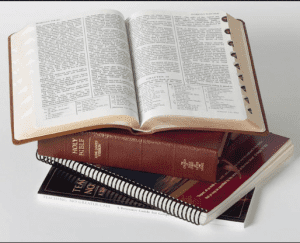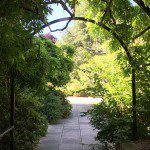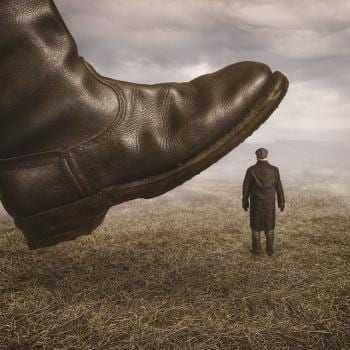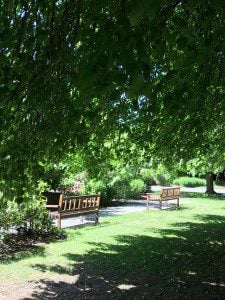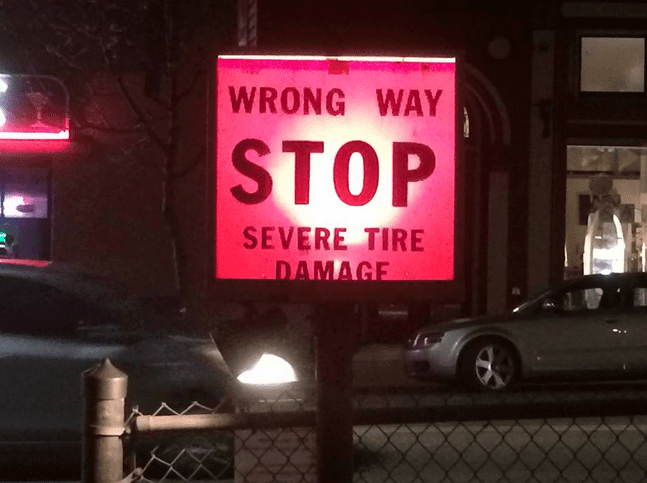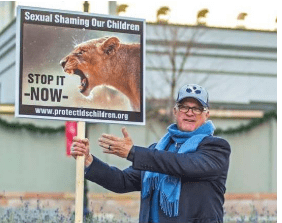My mother insisted I read The Book of Mormon before my baptism. It was a slow grind, but every morning I would jump into bed with her and snuggle up against her soft, warm body, and we’d make our way through eight verses at a time until it was done. Thinking about it now still arouses feelings of comfort and safety.
I was less active for half of my adolescence, and when I went back to church at 16, I turned to The Book of Mormon, and once again found contentment. I have always loved The Book of Mormon; I suspect because of those early associations with my mother, warm bodies embracing and the intimacy of having deep conversations about spiritual matters as a child.
My early fascination with the characters and stories have since turned into admiration for the way it lays out a rich framework of Christian and theological ethics for modernity. I think it really is a book for our day metaphorically addressing the important moral questions of just war, class society, charitable giving, spiritual transformation, moral leadership, and the fate of societies who commodify religion and embrace rampant materialism. Apparently, we’ll all die violently if we don’t sort ourselves out.
But The Book of Mormon’s theological possibilities have been compromised because of ecclesiastical overreach and wishful thinking. Church leaders made the book into something more than it should have been. One’s acceptance of the The Book of Mormon as a literal translation by Joseph Smith has become a sign of faithfulness and loyalty to the church. But the emotional tax one has to pay for this overreach if you are Indigenous American, or Pasifika is high.
I grew up with the explicit teaching that I was the literal posterity of Lehi. This meant that I had a sacred past; I was valuable in the Mormon present, and promises were awaiting me in the future. Church leader, after church leader, after church leader preached that my ancestral story was told in The Book of Mormon and thus I had a special place in the tradition. For instance;
Hugh B Brown, offering the closing prayer at they laying of the cornerstone of the New Zealand Temple said:
“We humbly thank Thee that this building is erected in this land, so that those faithful Maoris who came here in early days, descendants of Father Lehi, may be remembered by their descendants.”
At the dedication of the New Zealand Temple on April 20, 1958 Gordon Hinckley stated:
“Here are two great strains of the house of Israel and the children of Ephraim from the isles of Britain, and the children of Lehi from the isles of the Pacific.”
Speaking in Samoa in 1976 Spencer Kimball stated:
“And so it seems to me rather clear that your ancestors moved northward and crossed a part of the South Pacific. You did not bring your records with you, but you brought much food and provisions. . . .I would like to say to you brethren and sisters of New Zealand, you are some of Hagoth’s people, and there is No Perhaps about it!”
Except nobody has given us the memo from Salt Lake City, that this is likely no longer the case, they’ve just snuck a silence in there – as they do when things aren’t going their way.
Gone are the emphatic declarations by Church leaders of our literal descent from The Book of Mormon people. Gone is the claim in The Book of Mormon Introduction that the Lamanites are the principle ancestors of Native American People, and gone too is our special status in Mormon covenantal theology.
These sweeping claims have disappeared and the story over the years has been contracted as mounting genetic evidence provides a very different picture of the Indigenous American and Pacific origins. Cultural anthropology, archaeology and linguistics have failed to come up with any substantive evidence to support the proposition. To be fair, the LDS Church has squeaked an essay into their Gospel Topics section wherein they wrangle openly with the mounting genetic contest to the church’s once audacious genealogical claims. I suspect that that too will need to be quietly removed in the years to come. At the very least they will have to do something about Dallin Oaks’ claim:
“It is our position that secular evidence can neither prove nor disprove the authenticity of The Book of Mormon.”27
I imagine if a peer-reviewed study appeared in the Journal of Archeological Science providing definitive evidence to support The Book of Mormon claims, Elder Oaks won’t be trying to settle the excitement down with an appeal to faith and prayer as the final arbiter of Lamanite origins.
I share these musings in light of the fact that yesterday a conference was held at Utah State University in Logan, to discuss “New Perspectives on Joseph Smith and Translation’. I had the opportunity to interview three of the panel members who argued beautifully for a broader application of the word ‘translation’ as a starting place for new discussions. I’m in favour of anything that will move the boundaries of Mormon conversations out further. But I remain ambivalent about endless academic wrangling trying to make The Book of Mormon measure up to a standard that satisfies a Western theoretical framework, because it really complicates things for us so-called Children of Lehi.
The reality is that many Indigenous American and Polynesian Mormons continue to defer to The Book of Mormon as the final word on their origins. Despite evidence that suggests migratory and DNA patterns to the contrary, the Hagoth myth remains unchecked. So the question remains – how are the Church and its ancillary scholarship community going to break it to the people formerly known as Lamanites – that they probably aren’t what they had been lead to believe they were? I don’t sense a depth of awareness that this story for many, has meant everything, and has formed a significant connection between them and their faith.
Yet, holding on to the claim that the BOM is indeed an ancient record of Native American and Pasifika ancestry does violence to Indigenous knowledge. Contemporary scholarship is pointing to the impossibility of the culture described in The Book of Mormon and choosing to see yourself in Book of Mormon ancient identities is often done at the expense of the tribal and cultural identities offered up in the present.
There again, if we Children of Lehi turn our back on The Book of Mormon as pure bunkum and solely embrace ways of understanding our origins that feel more scientifically and culturally trustworthy we risk a wedge being placed between us and our family and religious community.
So, the notion of playing with the idea of ‘translation’ is less important than the spiritual and emotional effect of any shift in Book of Mormon translation discourse. Those very communities, socially constructed as belonging to the Book of Mormon narrative will likely be the first affected but the last invited to the table to share their thoughts on how this whole Book of Mormon conundrum should be dealt with.
So, for what its worth, I feel more and more convinced that The Book of Mormon is a prophecy of America’s future told through a romanticised myth out of Joseph’s imagination about an Iroquois past. Personally, I love it and I believe it – like I believe Māui caught the sun to slow down time. It doesn’t have to be literally true to make it meaningful, and trying to prove truth or fallacy is simply Western nuisance detritus that entirely misses the point of religion and spirituality.
The reality is we shouldn’t have been told it’s a ‘true story’ in the first place.
We should have been asked, ‘What does it mean to you and what wisdom do your people have to add life and relevance to this story?’
The sooner we can get to that conversation the better.

